The Ha Giang Loop in January offers travelers a unique perspective of Vietnam’s northernmost province. Cold, crisp air blankets the limestone karsts, creating a mystical landscape quite different from the vibrant colors of autumn. Fog weaves through valleys at dawn, revealing terraced fields glistening with frost and quiet mountain villages preparing for Tet festivities. While January brings challenges with its winter conditions, it also rewards visitors with peaceful roads, authentic cultural experiences, and a raw beauty that showcases the true character of this remarkable frontier region.
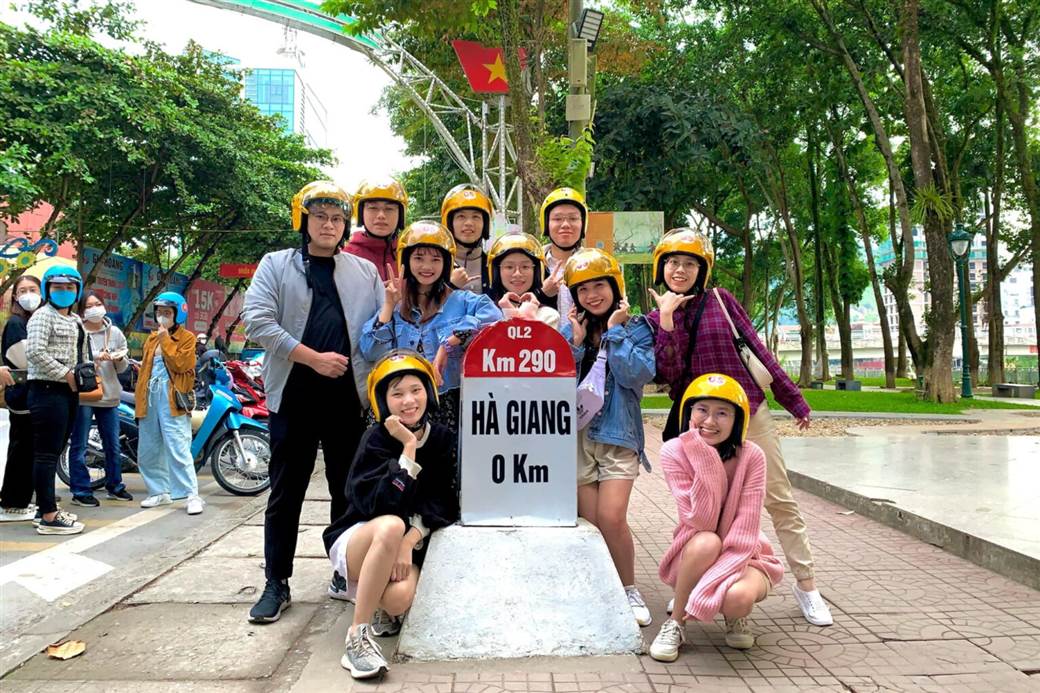
1. January in Ha Giang Loop – Is It Worth the Trip?
January marks the heart of winter in Ha Giang, Vietnam’s northernmost province. For travelers contemplating this timing, understanding both the advantages and challenges is essential. The winter atmosphere creates a dramatically different experience compared to the popular autumn months.
1.1 Why visit in January: Tranquility, unique scenery, fewer crowds
January offers an authenticity that peak seasons simply cannot match. Tourist numbers drop significantly, allowing you to experience the genuine rhythm of highland life. Local markets remain focused on residents rather than visitors, and you’ll often find yourself the only foreigner in villages and viewpoints.
The winter landscapes transform familiar scenes into something entirely new. Mist hangs in valleys creating ethereal mornings, while clear days offer exceptional visibility across multiple mountain ranges. Limestone karsts stand starkly against blue skies, and occasional frost creates sparkling panoramas rarely captured in photographs.
Accommodation prices decrease by 20-30% compared to peak season, with greater availability even at the most sought-after homestays. Roads that might feel congested during October’s buckwheat flower season become peaceful, letting you ride at your own pace without the pressure of other tourists.
1.2 Pros & cons overview
Pros of visiting in January:
- Dramatically fewer tourists, especially at iconic locations like Ma Pi Leng Pass.
- Crystal-clear visibility on sunny days, perfect for landscape photography.
- Lower prices for accommodation and activities throughout the region.
- Authentic cultural experiences as villages prepare for Tet celebrations.
- Certain flowers begin blooming, including early plum and peach blossoms.
- Dry roads make riding technically easier than during rainy months.
Cons to consider:
- Cold temperatures, particularly at higher elevations and at night.
- Morning fog can limit visibility until midday in some areas.
- Shorter daylight hours (around 11 hours) restrict riding time.
- Some accommodation may have limited heating options.
- Early morning frost can make roads slippery until the sun warms them.
- Certain services or restaurants might reduce operations during the low season.
The January experience suits travelers seeking authenticity and tranquility over perfect comfort. For photographers, culture enthusiasts, and those who appreciate landscapes in their stark winter beauty, the Ha Giang Loop in January delivers a profound connection with Vietnam’s wild northern frontier.
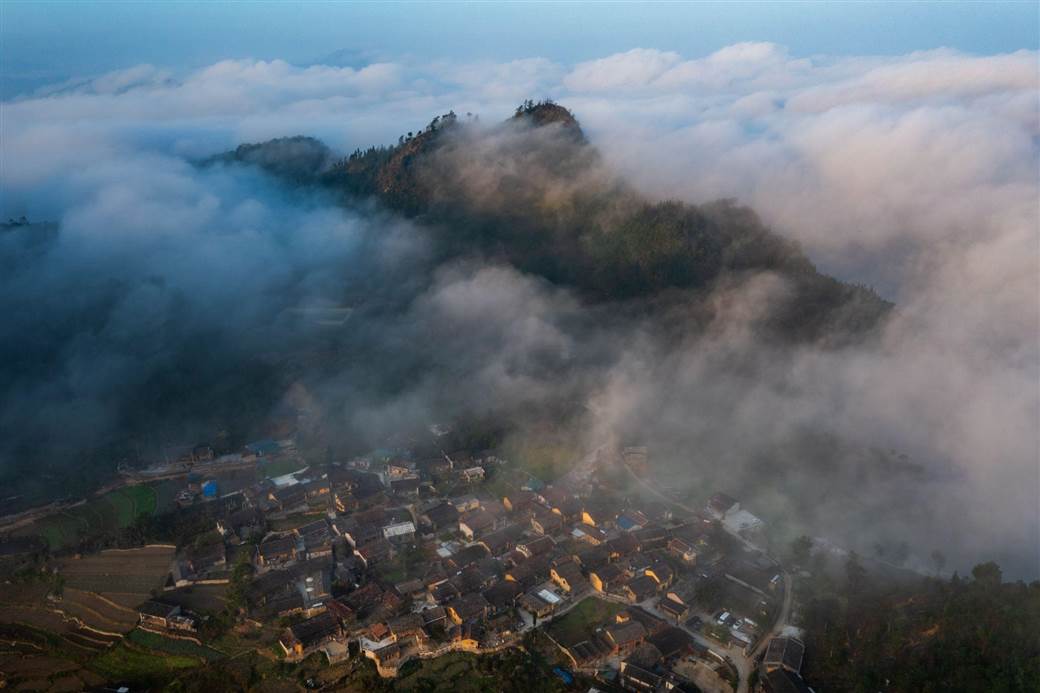
The Best Time to Visit Ha Giang: A Seasonal Guide to Flowers & Festivals
2. What to Expect – Weather & Climate in January
Weather becomes a defining factor of any January journey through the Ha Giang Loop. Understanding the specific conditions helps you prepare appropriately and set realistic expectations for your daily experiences on this northern frontier.
2.1 Average temperatures
January brings consistent cold across the entire region, though with significant variations between valleys and highlands. In lower areas like Ha Giang City (elevation 100-200m), daytime temperatures typically range from 12-18°C (53-64°F), creating comfortable riding conditions during midday sunshine.
As you climb higher to places like Dong Van and Meo Vac (elevation 1,000-1,600m), temperatures drop noticeably. Daytime highs here generally hover between 8-13°C (46-55°F) even in sunshine. The transition between valley warmth and highland chill can be surprisingly abrupt as you climb mountain passes.
Nighttime brings much colder conditions throughout the region. In lower valleys, expect temperatures around 7-12°C (45-54°F), while highland towns regularly drop to 3-7°C (37-45°F). In extremely cold spells, higher elevations like Lung Cu or Dong Van may even experience near-freezing temperatures overnight, occasionally dipping below 0°C (32°F).
The temperature variation between sunny and shaded areas becomes particularly noticeable. Riding through a mountain shadow can feel 5-8 degrees colder than sections in direct sunlight. Similarly, afternoons provide the warmest riding hours, while early mornings and late afternoons can feel significantly colder.
2.2 Rainfall, fog, & wind
January ranks among Ha Giang’s driest months, with minimal rainfall and excellent riding conditions. Average monthly precipitation drops to just 15-25mm, typically occurring as occasional light drizzle rather than sustained downpours. Many visitors experience entirely rain-free trips throughout their journey.
Morning fog, however, becomes a defining characteristic of winter rides. Dense fog regularly forms overnight in valleys and mountain passes, limiting visibility until 9-10am in many areas. The fog adds mystique to the landscape but requires cautious riding and flexible scheduling for photography and viewpoint visits.
Wind patterns across the loop intensify during winter months. Exposed mountain passes like Ma Pi Leng can experience strong gusts, particularly in the afternoons. These winds cut through light clothing and significantly amplify the perceived cold, creating a wind chill effect that demands proper gear.
The combination of morning frost and fog creates the primary safety concern for January riders. Roads remain wet longer in shaded sections, and early departures may encounter slippery conditions, especially on steep mountain passes. By mid-morning, sunshine typically dries most routes, making 9-10am departures safer and more comfortable.
2.3 Typical day breakdown and sunrise/sunset times
A typical January day on the Ha Giang Loop follows a predictable pattern that helps with planning:
- 6:30-7:00am: Sunrise brings first light, though often obscured by fog in valleys and mountain areas.
- 7:00-9:30am: Dense morning fog gradually thins, temperatures remain coldest of the day.
- 9:30-11:00am: Fog typically dissipates, revealing sunny conditions in most areas.
- 11:00am-2:30pm: Peak warmth and clearest visibility – ideal riding hours.
- 2:30-5:00pm: Temperatures begin decreasing, light remains good for photography.
- 5:00-5:30pm: Sunset comes relatively early, with rapid cooling afterward.
The shortened daylight hours significantly impact your riding schedule. With approximately 11 hours of usable light, most travelers find themselves planning shorter daily distances than during other seasons. Most experienced riders recommend being off the road by 5:00pm, as darkness arrives quickly and temperatures drop rapidly.
This typical weather pattern encourages a rhythm of later morning starts and earlier evening finishes. Many travelers use the early morning hours to explore their overnight location on foot before beginning the day’s ride once fog has lifted and roads have dried.
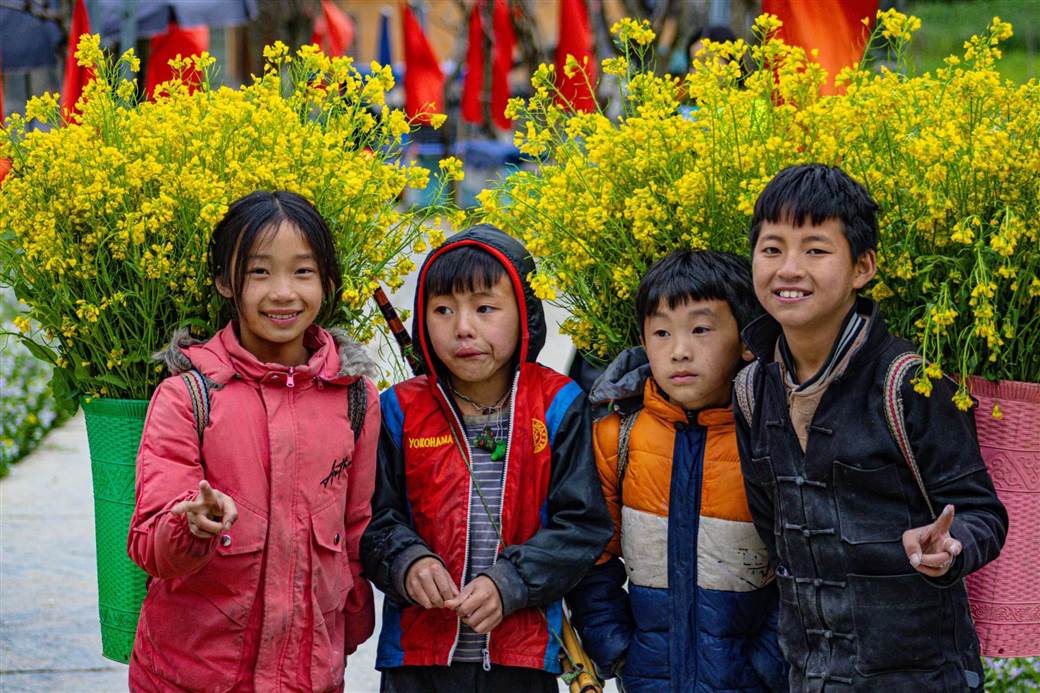
3. Essential Packing & Preparation Tips for January
Preparing appropriately for Ha Giang’s January conditions makes the difference between a challenging ordeal and an exhilarating adventure. The region’s winter climate demands specific gear and careful planning to ensure comfort and safety throughout your journey.
3.1 Layering for cold, damp conditions
The key to comfort in Ha Giang’s variable January temperatures lies in mastering the art of layering. Rather than packing a single heavy coat, focus on versatile layers that can be adjusted throughout the day as conditions change.
Start with a moisture-wicking base layer that keeps sweat away from your skin. Thermal options made from merino wool or synthetic materials provide warmth without bulk and dry quickly if they become damp. Long underwear or leggings under your regular pants add crucial warmth without affecting mobility while riding.
For mid-layers, pack lightweight fleece or down vests that trap heat effectively while allowing arm movement. A packable down jacket serves as your primary insulation layer – lightweight versions compress easily into daypacks when not needed during warmer afternoons.
Your outer layer should prioritize wind protection above all else. A waterproof-breathable shell jacket blocks the cutting mountain winds while venting body heat during active periods. Choose one with adjustable cuffs and a high collar to prevent cold air from entering at your wrists and neck.
Don’t underestimate the importance of protecting extremities. Thin glove liners worn under waterproof outer gloves allow dexterity for operating cameras or phones while maintaining warmth. A neck gaiter or buff provides versatile protection for your face, neck, and ears, while a beanie hat under your helmet prevents significant heat loss through your head.
3.2 Motorcycle gear, clothing, must-have accessories
Proper motorcycle gear becomes even more critical during January rides. Begin with a high-quality helmet that fits properly – full-face options provide the best protection from both accidents and cold wind. Many riders add a tinted or clear visor to block wind and morning fog moisture.
Riding jackets designed for cold weather include crucial features like reinforced padding, reflective elements for improved visibility in fog, and adjustable ventilation for temperature regulation. Water-resistant materials handle light drizzle and morning dew effectively. If your jacket lacks insulation, wear your down layer underneath.
For lower extremities, consider water-resistant riding pants or rain overpants that block wind effectively. Regular jeans provide minimal protection from cold and become dangerously cold if they get wet. Calf-height waterproof boots keep feet warm and dry while providing ankle protection during rides.
Essential accessories for January rides include:
- Thin touchscreen-compatible glove liners under weatherproof riding gloves.
- Polarized sunglasses to reduce glare from morning frost and afternoon sun.
- Reusable hand warmers for extremely cold mornings or high-altitude sections.
- Waterproof phone case and camera protection for unexpected moisture.
- Small thermos for carrying hot drinks during day rides.
- Lightweight backpack rain cover for unexpected drizzle.
Small silica gel packets help manage moisture in camera bags and electronics overnight, as January’s humidity can cause condensation issues in cold rooms. A compact first-aid kit should include blister treatment, as cold-weather footwear sometimes causes unexpected friction points.
3.3 Tech & travel insurance considerations
Technology requires special attention during January trips to Ha Giang. Extreme temperature changes between warm rooms and cold outdoor environments can cause condensation inside cameras and electronics. Store equipment in sealed bags when moving between temperature zones to allow gradual adjustment.
Battery performance degrades significantly in cold weather. Carry spare batteries for cameras and phones, keeping them in inner pockets where body heat maintains their charge. Power banks lose efficiency in cold conditions, so consider higher-capacity options than you might normally pack.
Travel insurance becomes particularly important for winter trips. Verify that your policy explicitly covers motorcycle riding in Vietnam, as many standard policies exclude this activity. Look for coverage that includes medical evacuation, as the remote nature of Ha Giang means serious medical issues require transportation to larger cities.
Consider adding coverage for trip delays and cancellations related to weather conditions. While rare, occasional extreme cold fronts can make riding unsafe or uncomfortable, potentially requiring schedule adjustments. Policies that allow for weather-related itinerary changes provide valuable flexibility.
Document all rental equipment thoroughly before departing, including photographs of any pre-existing damage to motorcycles. January’s limited daylight means returning rentals after dark sometimes, which can complicate damage assessments without proper documentation.
Finally, share your detailed itinerary with someone not traveling with you, including accommodation contact information for each night. Cell service remains spotty throughout the loop, particularly in valley areas, making regular check-ins important for safety during the quieter winter season.
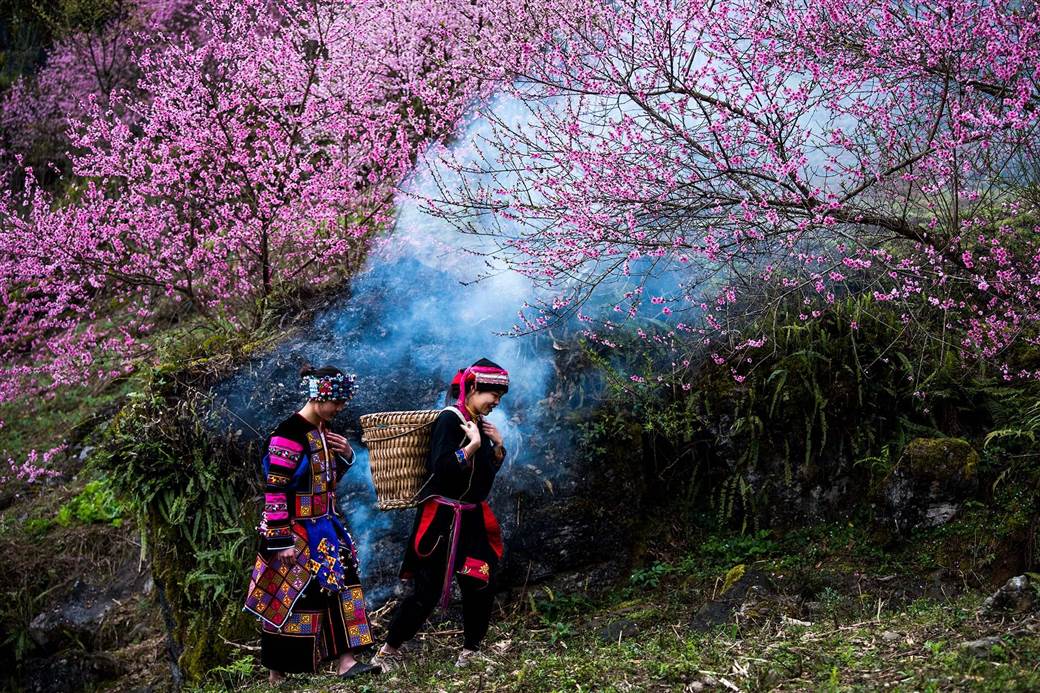
Ha Giang weather by month complete local guide for travelers
4. Best Things to See & Do on the Loop in January
January transforms Ha Giang’s landscape, offering unique seasonal attractions beyond the typical tourist experience. The winter atmosphere brings different highlights to the forefront, creating opportunities that visitors during warmer months might never encounter.
4.1 Flower blossoms & winter landscapes
While January misses the famous buckwheat season, it delivers its own floral spectacles. Early plum blossoms begin appearing in late January, particularly around Lung Cu and higher villages near the Chinese border. These delicate white flowers contrast beautifully with the stark winter landscape, creating ethereal scenes on misty mornings.
Mustard flower fields reach their peak in many valleys during January. The vibrant yellow blooms cover hillsides around Quan Ba and Yen Minh districts, creating golden carpets that stand out dramatically against the winter backdrop. Early morning visits capture these fields with hanging fog, while midday sun illuminates their color most intensely.
Winter transforms familiar landscapes into extraordinary vistas. The reduced foliage on deciduous trees reveals the true complexity of the limestone karst formations, with rock structures visible that remain hidden during lush summer months. Sunrise light creates dramatic shadows across these exposed geological formations, particularly visible from Ma Pi Leng Pass.
Frost patterns form regularly at higher elevations, especially in northern sections near Dong Van and Lung Cu. These crystalline formations appear on grass, rocks, and occasional puddles, creating miniature art displays that disappear as the sun rises. Early risers find these frost landscapes most prevalent on clear, cold mornings following precipitation.
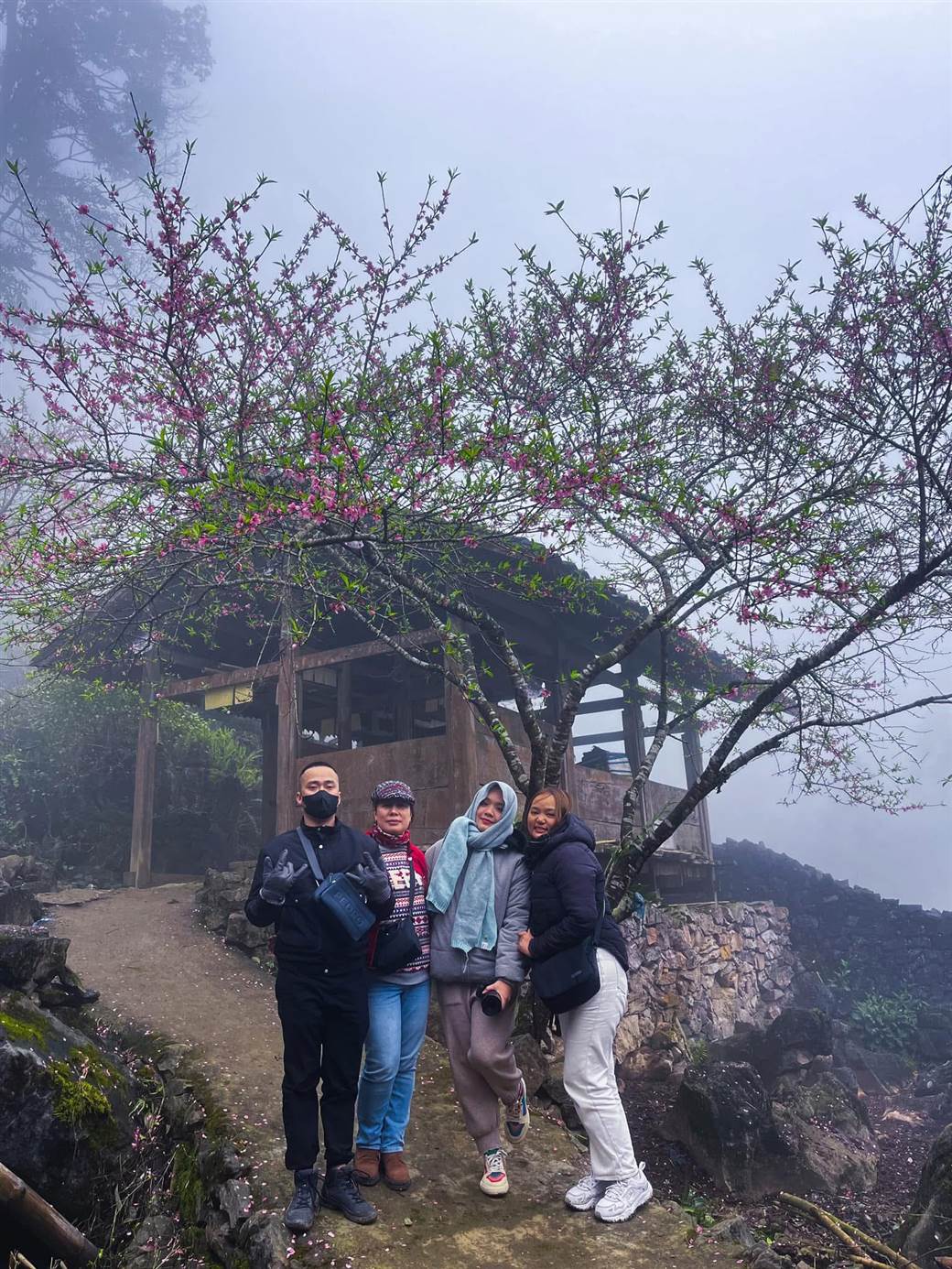
4.2 Ethnic markets & early Tet preparations
January falls during the lead-up to Tet (Lunar New Year), bringing unique cultural activities to mountain communities. Weekly markets take on special significance as families prepare for the year’s most important celebration. Dong Van Sunday Market and Meo Vac Market become particularly animated, with specialty foods, decorations, and clothing appearing alongside regular goods.
Market activities shift toward Tet preparations throughout the month. Observe villagers selecting particular plants and flowers with symbolic importance, purchasing new clothing items, and gathering specific food ingredients only used during holiday celebrations. Unlike peak tourist seasons, January markets primarily serve local needs rather than visitor interests, offering genuine cultural insights.
Ethnic minority groups begin preparing traditional clothing for Tet celebrations. In Hmong villages around Lung Cu and Dong Van, women work on elaborate indigo-dyed textiles and embroidery. Some homes welcome respectful visitors to observe these processes, particularly in communities with established homestay operations.
Early food preparation for Tet becomes visible in many households. Traditional items like bánh chưng (square sticky rice cakes) require days of preparation, and families often work communally on these tasks. Homestay experiences during this period might include opportunities to participate in or observe these important cultural practices.
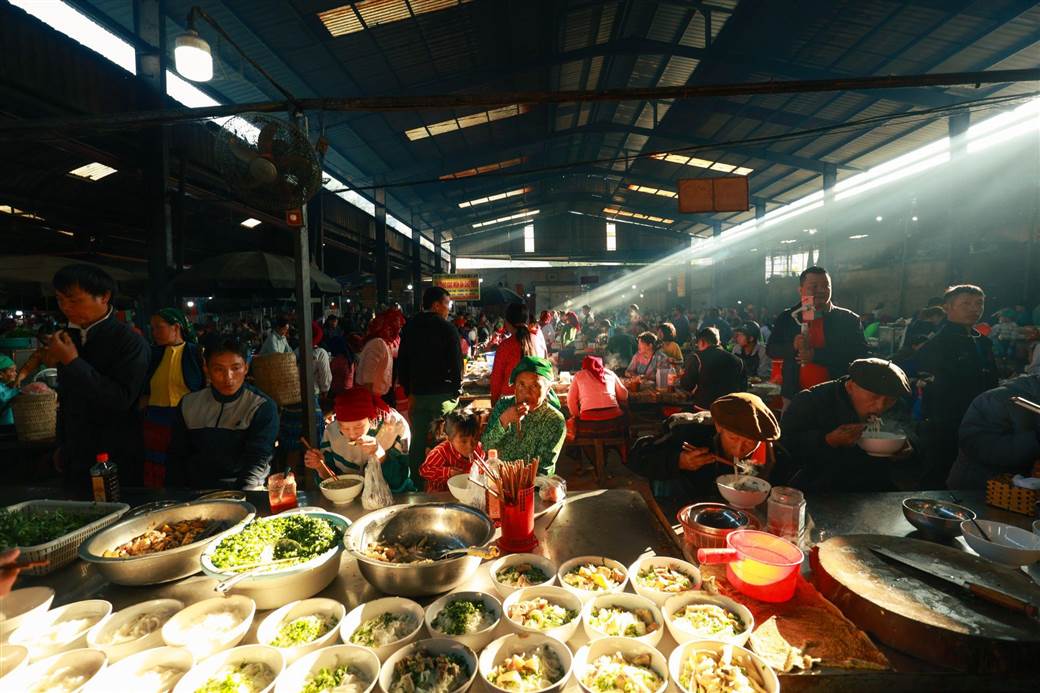
4.3 Top trekking routes & photo spots
January’s clear air and reduced foliage create ideal conditions for trekking and photography throughout Ha Giang. The Lung Cu trek from the flagpole down through Lo Lo Chai village offers spectacular winter visibility. The 4-5 hour route passes through Hmong settlements nearly empty of tourists, with panoramic views extending into China on clear days.
The Heaven’s Gate trekking route near Quan Ba benefits from January’s reduced vegetation. This 3-4 hour trek passes through small villages and along ridgelines with views impossible during summer’s lush growth. Morning fog in the valley below creates the “sea of clouds” effect that photographers particularly treasure.
For serious photographers, January transforms several key photo locations:
- Ma Pi Leng Pass at sunrise captures dramatic light across the canyon with minimal haze.
- Nho Que River viewpoints benefit from the emerald water contrasting with stark winter landscapes.
- Tu San Canyon shows its full geological structure without summer foliage obstruction.
- Lung Cu Flag Tower offers visibility extending for dozens of kilometers on clear winter days.
- Early morning in Dong Van Ancient Town features mist weaving between traditional homes.
Short walking trails around Pho Bang and Pho Cao villages require minimal effort while delivering remarkable winter landscapes. These gentle paths wind through mustard flower fields and traditional hamlets, ideal for those preferring photography stops with limited physical demands.
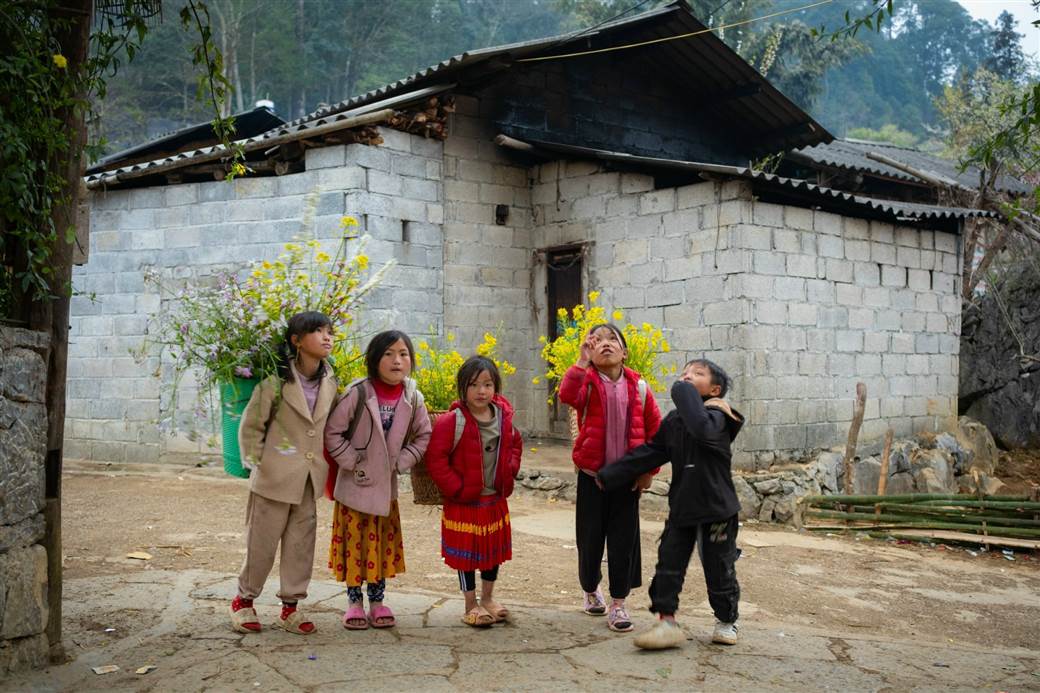
4.4 Hot foods & warming local specialties
Cold January weather introduces travelers to warming highland specialties often overlooked during warmer months. Thắng cố, a richly spiced meat stew traditionally made with horse meat (though beef and pork variations exist), becomes particularly satisfying after cold rides. Find the most authentic versions at Sunday markets in Dong Van and Meo Vac.
Homestays throughout the region serve men mén, a hearty corn-based dish similar to polenta, topped with stir-fried pork and local herbs. This warming staple provides sustained energy for cold-weather activities and showcases the importance of corn in highland ethnic cuisine.
Hot pot restaurants in larger towns like Dong Van and Meo Vac adapt their offerings for winter, incorporating more warming herbs and heartier ingredients. Mushroom varieties only available during winter months feature prominently, along with local vegetables preserved from autumn harvests.
Traditional rice wine (rượu) takes on ceremonial importance during the pre-Tet period. Many families prepare special batches for the upcoming celebrations, sometimes offering visitors small tastings of these potent spirits. The warming effect proves welcome after cold rides, though moderation remains important for safety.
Street vendors in market towns adjust their offerings for winter temperatures. Hot soy milk (sữa đậu nành) served with sugar and ginger provides immediate warming, while bánh giò (pyramid-shaped rice dumplings filled with pork and mushrooms) steams in covered baskets, creating perfect portable snacks for cold days.
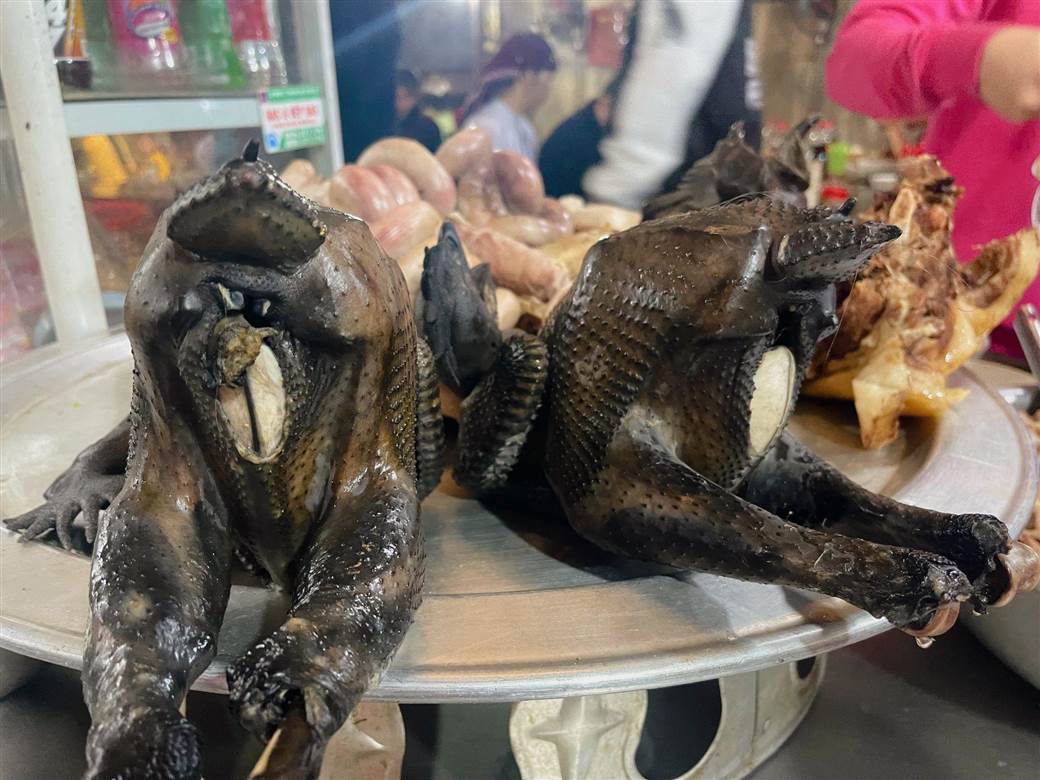
5. Safety & Comfort: Riding Tips for Winter
Navigating Ha Giang’s challenging roads requires additional precautions during January. Winter conditions introduce specific hazards, but with proper preparation and riding techniques, you can enjoy a safe and comfortable journey through this remarkable landscape.
5.1 Handling fog & slippery roads
Morning fog presents the most consistent challenge for January riders. Visibility often drops to 20-50 meters until mid-morning, particularly in valley sections and high mountain passes. Wait until at least 8:30-9:00am before starting your day’s ride, allowing the densest fog to dissipate and temperatures to rise slightly.
When riding in fog, reduce speed significantly and maintain a larger following distance from other vehicles. Use your motorcycle’s low beam headlight rather than high beams, as the latter reflects off fog particles and further reduces visibility. If wearing a full-face helmet, apply anti-fog treatment to your visor before departing.
Road surfaces require particular attention in January mornings. Overnight condensation creates damp pavement even without rainfall, while frost forms regularly at higher elevations. These conditions make road markings, metal surfaces, and painted areas especially slippery. Approach curves with reduced entry speed and avoid sudden braking or acceleration.
Shaded road sections remain hazardous longer than sun-exposed areas. Northern-facing slopes and roads cut into mountains may stay slick until midday. Identify these areas by watching for remaining frost patches or darker, damp-looking pavement. Maintain a straight line through these sections and avoid leaning heavily into turns.
For stream crossings and concrete water channels crossing the road, exercise extreme caution. These areas collect moisture and often develop slick algae in winter. Cross at right angles whenever possible, maintaining steady throttle without acceleration or braking during the crossing itself.
5.2 Reliable routes and avoiding hazards
January’s shorter daylight hours necessitate careful route planning. Prioritize completing major mountain passes like Ma Pi Leng before 3:00pm, allowing buffer time to reach your destination before darkness falls. Consider dividing the traditional loop into additional segments to reduce daily distance requirements.
The clockwise route direction offers particular advantages during January. Morning fog typically clears first in the Ha Giang to Yen Minh section, making this an ideal starting segment that allows for later morning departures. Additionally, the clockwise approach means tackling the challenging Ma Pi Leng Pass during mid-afternoon optimal visibility rather than morning fog.
Specific road sections require extra caution in January:
- The descent from Dong Van to Ma Pi Leng Pass collects morning frost in shaded sections.
- Hairpin turns approaching Meo Vac often retain moisture from overnight fog.
- The high-elevation section near Lung Cu Flag Tower experiences the coldest temperatures and most persistent frost.
- Valley roads between Yen Minh and Dong Van hold dense fog later than most areas.
- The winding descent from Du Gia back toward Ha Giang receives limited winter sunlight.
Consider alternate routes during extreme weather conditions. The southern section connecting Du Gia back to Ha Giang sits at lower elevation and typically offers slightly warmer temperatures and earlier fog clearance than the northern route through Dong Van. This southern loop section provides a suitable alternative when conditions on Ma Pi Leng Pass prove challenging.
5.3 Staying warm in local accommodation
Highland accommodation in January presents its own challenges for maintaining comfort. Most traditional homestays and budget guesthouses have limited or no central heating, relying instead on strategies adapted to the local climate.
Request additional blankets immediately upon check-in rather than waiting until bedtime. Many homestays provide thick, quilted blankets that deliver surprising warmth. Some locations offer heated mattress pads or electric blankets upon request, particularly in Dong Van and Meo Vac where winter tourism has become more established.
Strategic layering applies to sleep as well as riding. Wear clean, dry base layers as sleepwear, adding a light hat if rooms feel particularly cold. The temperature difference between the floor and bed level can be substantial, so keep all clothing for the next day in your bed rather than unpacking onto cold surfaces.
Many traditional homes feature wood-burning stoves or fire pits that serve as evening gathering places. These communal areas provide both warmth and cultural experiences, as families often share stories and sometimes music around the fire. Participate in these gatherings for both physical comfort and meaningful local interaction.
Hot showers become particularly important after cold rides. Confirm availability before booking, as water heating systems vary widely across the region. Some locations offer excellent hot water only during specific hours, typically early evening. Scheduling your shower immediately upon arrival helps avoid cold water later when temperatures drop further.
Morning departures become more comfortable with simple preparations the night before. Place the next day’s riding clothes near your body under blankets to pre-warm them. Fill a thermos with hot water or tea before bed so you can hydrate with something warming immediately upon waking.
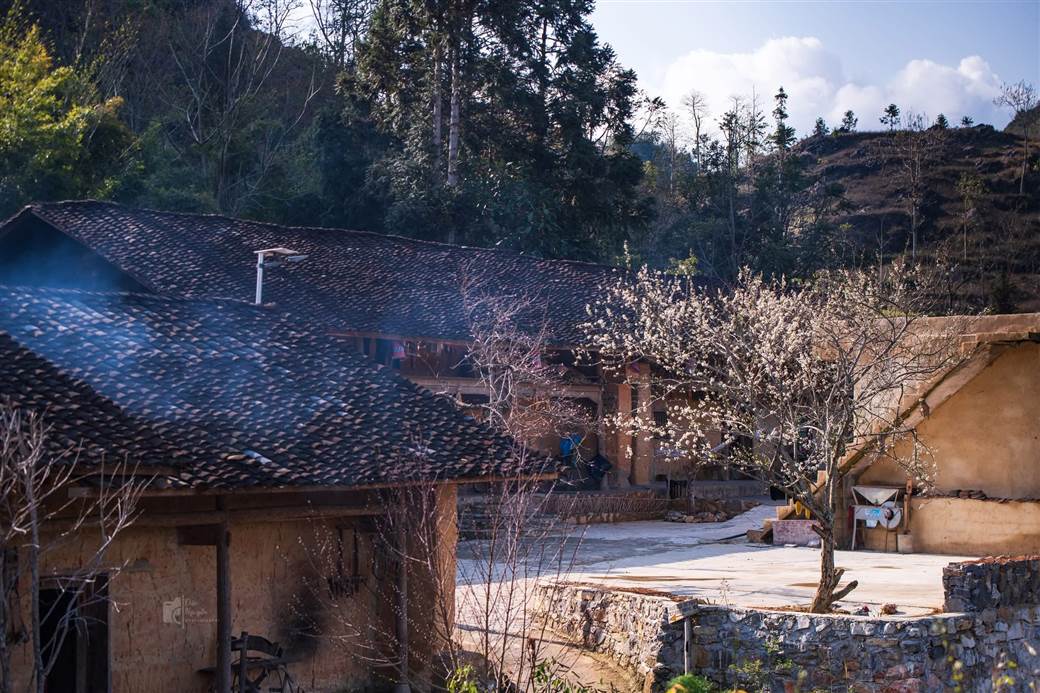
6. Top Festivities & Local Events in January
January precedes the Lunar New Year, creating a distinct cultural atmosphere throughout Ha Giang. The region’s diverse ethnic communities maintain unique traditions during this period, offering visitors authentic insights into local life that peak-season travelers rarely experience.
6.1 Tet preparations in villages
As January progresses, Tet preparations become increasingly visible across Ha Giang’s villages. Traditional homes undergo thorough cleaning, with families refreshing decorations and making repairs in preparation for the new year. This cleaning holds deep symbolic importance, representing the removal of bad fortune from the previous year.
Hmong communities around Dong Van and Lung Cu begin creating new clothing items, particularly for children who traditionally receive new garments for Tet. Indigo dyeing activities increase, with distinctive textiles laid out to dry on hillsides. Visitors may observe or sometimes participate in these processes at homestays where families maintain these traditions.
Food preparation intensifies throughout the month. In many homes, families begin making candied fruits, rice cakes, and special ceremonial dishes that require extended preparation. Some items must be prepared days or even weeks in advance, using traditional preservation methods passed down through generations.
Markets throughout the region swell with symbolic items used for Tet celebrations. Flowers, particular fruit varieties, ceremonial papers, and specific decorative elements appear in increasing quantities. Peach branches and small kumquat trees, symbolizing prosperity and good fortune, become prominent in markets closer to the holiday.
Participating in these preparations through homestay experiences provides unique cultural insights. Many families welcome respectful involvement from guests, particularly in activities like making bánh chưng (sticky rice cakes wrapped in leaves). These participatory experiences create meaningful connections despite language barriers.
6.2 Notable regional fairs or festivals
While major celebrations occur mainly after January with the arrival of Tet itself (typically falling in February), certain local events take place during January. The exact timing follows the lunar calendar, so specific dates shift each year.
The Hmong “Gau Tao” festival sometimes begins in late January, particularly in early lunar years. This important celebration centers around finding partners for young people, with elaborate courtship rituals, games, and musical performances. The largest celebrations typically occur in Dong Van and Meo Vac districts, featuring traditional dress and musical instruments rarely seen outside these events.
Late January sometimes hosts “Lễ Cúng Rừng” (Forest Worship) ceremonies in Dao communities, particularly around Yen Minh. These ceremonies honor forest spirits and seek protection for the coming year. Characterized by distinctive red headdresses and chanting, these events remain primarily religious rather than tourist-oriented, requiring respectful observation.
Local agricultural markets take on festive qualities throughout January. The “phiên chợ vùng cao” (highland market sessions) in places like Quản Bạ, Yên Minh, and smaller villages operate on specific days of the lunar calendar. These markets combine practical trading with social functions, featuring traditional foods, rice wine, and sometimes impromptu musical performances.
Weekly Sunday markets in Đồng Văn and Mèo Vạc grow increasingly festive as Tet approaches. Beyond their practical function, these gatherings serve as community social hubs where information is shared and connections maintained. January visitors witness these markets at their most authentic, focused on local needs rather than tourist expectations.
For travelers seeking authentic cultural experiences, these January events offer rare insights into traditional life. Unlike organized performances common in tourist areas, these activities represent genuine community gatherings. Participation requires sensitivity and often benefits from local guidance, making homestay connections particularly valuable for accessing these experiences.
7. Sample Itinerary & Travel Logistics
Planning a January trip to Ha Giang requires balancing ambitious sightseeing with winter weather realities. The following itinerary adapts the classic loop to January conditions, incorporating flexibility for fog delays while maximizing the season’s unique advantages.
7.1 3–5 day itinerary suggestion
3-Day Compact Itinerary:
Day 1: Ha Giang to Yen Minh (90km)
- Depart Ha Giang City around 9:00am after morning fog lifts.
- Visit Fairy Mountains and Heaven’s Gate viewpoint in Quan Ba.
- Lunch in Quan Ba town, enjoying local specialties.
- Afternoon ride through Tham Ma Pass to Yen Minh.
- Explore Yen Minh town and local markets.
- Overnight in Yen Minh town guesthouses or nearby homestays.
Day 2: Yen Minh to Dong Van to Meo Vac (80km)
- Morning visit to Lung Cu Flag Tower (optional side trip, +50km).
- Explore Hmong King’s Palace near Dong Van.
- Lunch in Dong Van Ancient Town.
- Afternoon ride across Ma Pi Leng Pass during optimal sunlight.
- Photography stops at Tu San Canyon viewpoints.
- Overnight in Meo Vac town.
Day 3: Meo Vac to Ha Giang (150km)
- Early start for Meo Vac Sunday Market (if applicable).
- Return via southern route through Khau Vai and Du Gia.
- Lunch stop in Du Gia village.
- Afternoon return to Ha Giang with stops at minority villages.
- Evening departure from Ha Giang to Hanoi.
5-Day Extended Winter Itinerary:
Day 1: Ha Giang to Quan Ba (40km)
- Late morning departure from Ha Giang after fog clears.
- Leisurely exploration of Heaven’s Gate and surrounding viewpoints.
- Afternoon walk through nearby villages and mustard flower fields.
- Overnight in Quan Ba homestay for authentic mountain experience.
Day 2: Quan Ba to Yen Minh to Dong Van (80km)
- Morning ride through Tham Ma Pass after sunrise.
- Extended stop in Yen Minh for local market and town exploration.
- Afternoon ride to Dong Van with multiple photo stops.
- Visit Lung Cam Cultural Village before sunset.
- Overnight in Dong Van Ancient Town.
Day 3: Dong Van Exploration Day
- Morning side trip to Lung Cu Flag Tower.
- Visit to Hmong King’s Palace.
- Afternoon exploration of Dong Van Ancient Town.
- Optional short treks to nearby villages.
- Second night in Dong Van for deeper cultural immersion.
Day 4: Dong Van to Meo Vac to Du Gia (90km)
- Early start to experience Ma Pi Leng Pass in morning light.
- Extended photo stops along Ma Pi Leng Pass.
- Optional boat ride on Nho Que River (weather permitting).
- Lunch in Meo Vac town.
- Afternoon ride to Du Gia through spectacular valley scenery.
- Overnight in Du Gia village homestay with hot dinner.
Day 5: Du Gia to Ha Giang (80km)
- Morning walk to Du Gia Waterfall.
- Relaxed return journey to Ha Giang City.
- Multiple stops at minority villages and viewpoints.
- Late afternoon arrival in Ha Giang.
- Evening departure to Hanoi or optional night in Ha Giang City.
Both itineraries include shorter daily distances than typical warm-weather tours, accounting for January’s limited daylight and potential morning delays. The extended version adds significant buffer time for weather variations and deeper cultural experiences.
7.2 Transport, accommodation, guided tour options
Transportation to Ha Giang:
January offers several advantages for reaching Ha Giang from Hanoi. Overnight sleeper buses provide the most efficient option, with reduced crowds meaning better seat selection and more comfortable journeys. Major providers like Hai Van and Queen Cafe operate daily departures around 9:00pm, arriving in Ha Giang around 5:00am (200,000-300,000 VND).
Private car services become more affordable in January’s low season, with rates approximately 20% lower than peak months. Four-passenger vehicles range from 2,200,000-2,800,000 VND for the one-way journey, offering flexibility for early morning departures that maximize your first day in Ha Giang.
For loop transportation, semi-automatic and automatic motorbikes remain widely available from rental shops in Ha Giang City. January’s reduced demand means better selection of quality bikes. Expect to pay 150,000-250,000 VND daily for standard models, with discounts for multi-day rentals. All reputable shops provide helmets, though winter-specific gear like gloves requires separate rental or purchase.
January Accommodation Options:
Homestays offer the most authentic and comfortable January experience, as traditional homes often have wood-burning stoves or central hearths for evening warmth. Popular options like Dao Lodge in Du Gia and Homestay Hung Vuong in Dong Van maintain consistent heating throughout winter. Advance booking remains important for these premier options despite lower overall tourism.
Guesthouses and small hotels in towns like Dong Van, Yen Minh, and Meo Vac typically offer electric blankets or space heaters during winter. The Bho Mien Hotel in Dong Van and Rocky Plateau in Meo Vac specifically advertise winter heating amenities. Room rates drop approximately 30% from peak season, with standard doubles ranging from 250,000-400,000 VND.
Higher-end accommodations like H’Mong Village Resort in Dong Van and Rock Plateau Hotel in Meo Vac offer the most consistent heating and hot water. While pricier (600,000-1,000,000 VND nightly), these properties provide reliable comfort after cold riding days.
Guided Tour Considerations:
January’s challenging conditions make guided tours particularly valuable for first-time visitors. Local guides adjust routes based on daily weather patterns and road conditions unknown to most travelers. Tour companies like Phieu Travel and QT Motorbikes offer winter-specific packages that include proper gear and accommodations with confirmed heating.
Easy Rider services, where you ride as a passenger with an experienced local driver, gain popularity in January. This option eliminates riding risks while providing cultural insights from guides who speak both English and local minority languages. Daily rates range from $40-60 USD depending on itinerary length and inclusions.
For travelers confident in their riding abilities, guided self-ride groups provide a balance of independence and safety. These services typically include accommodation bookings, route planning adapted to winter conditions, and support vehicles for emergencies. The additional cost (approximately $30-40 USD daily beyond basic bike rental) delivers significant peace of mind during the challenging winter season.
The Ha Giang Loop in January presents a distinct face of Vietnam’s northern highlands – austere, misty, and profoundly peaceful. While challenging in its winter conditions, this season rewards prepared travelers with uncrowded roads, crystal-clear mountain views, and genuine cultural experiences rarely available during busier months. The stark beauty of frost-covered karsts and the warm hospitality of highland communities preparing for Tet create memories quite different from the standard tourist experience.
For those seeking an adventure beyond the ordinary, January in Ha Giang delivers a journey of both natural wonder and cultural discovery. With proper preparation and a flexible mindset, winter travelers find themselves welcomed into a landscape transformed by the season’s unique character. For experienced guidance through this remarkable winter landscape, consider reaching out to Phieutravel.com, where local expertise meets genuine passion for sharing Ha Giang’s winter magic.
Read more:
- The Death Rock of Ha Giang A Challenge for Adventure Seekers
- The Ultimate Guide to Driving the Ha Giang Loop by Car from Hanoi
- Hidden Paradises: The Enchanting Waterfalls on the Ha Giang Loop

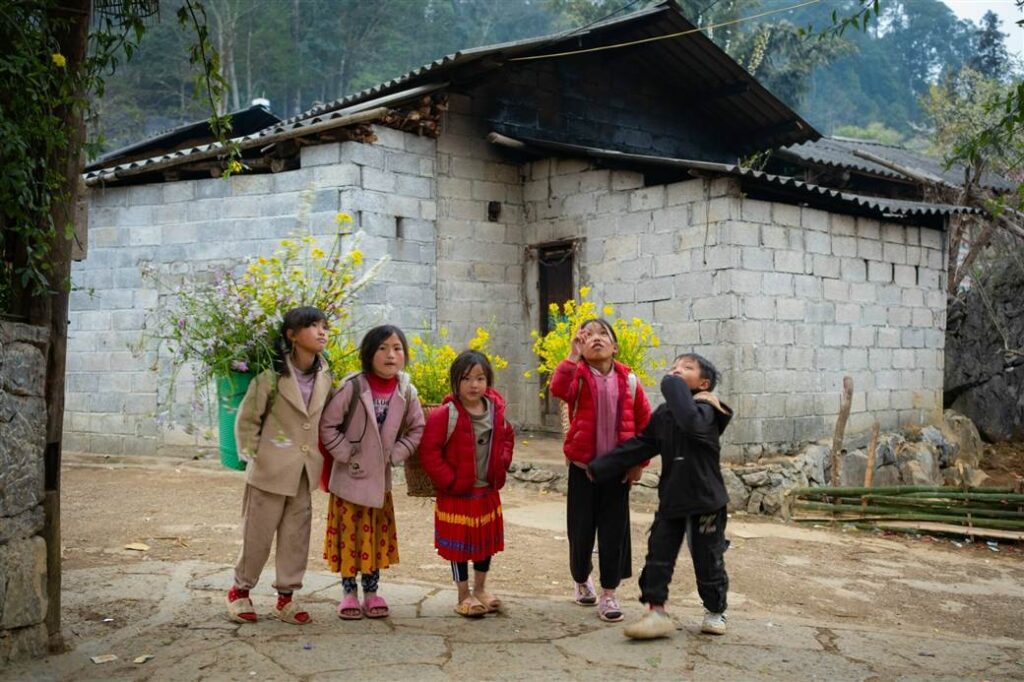
You Might Also Like
Ha Giang Weather in September: Complete Guide for Travelers
Exploring the magnificent Ha Giang Loop in September offers travelers a perfect balance of favorable[...]
Quan Ba Twin Mountains: Ha Giang’s Iconic Fairy Hills and Complete Travel Guide
The mystical Quan Ba Twin Mountains rise from the emerald valleys of Ha Giang like[...]
Vuong family mansion: the architectural marvel and cultural legacy of Ha Giang
Deep in Vietnam’s northern highlands, where mist-shrouded mountains meet terraced rice fields, stands a testament[...]
Ha Giang Loop Safety Tips: How to Ride Securely in Vietnam’s Northern Mountains
The Ha Giang Loop, with its winding mountain roads and breathtaking landscapes, offers one of[...]
The Ultimate Guide to the M-Shaped Curve on Ha Giang Loop
Vietnam’s remote northern province of Ha Giang hides a natural wonder that has captivated adventurous[...]
Most Beautiful Places to Visit in Vietnam: Essential Destinations and Insider Tips
Vietnam captivates travelers with its stunning landscapes, rich cultural heritage, and warm hospitality. From mist-shrouded[...]
Beyond the Beaten Path: Discovering Ha Giang Province in Northeast Vietnam
Ha Giang Province in Northeast Vietnam stands as one of the country’s last frontiers for[...]
Rainy season in Ha Giang: what to expect, when to go, and travel tips
Vietnam’s northern frontier reveals a different face during the rainy season, transforming Ha Giang’s limestone[...]